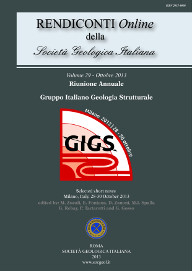
The Intrapontide Suture zone in Turkey: the eastern extension of the Dinaric-Hellenic belt?
Michele Marroni (a,b), Chiara Frassi (b), Cemal M. Göncüoğlu (c), Gianfranco Di Vincenzo (b), Luca Pandolfi (a,b), Gisella Rebay (d), Alessandro Ellero (b) & Giuseppe Ottria (b)
(a) Dipartimento di Scienze della Terra, Università di Pisa, via S. Maria 53, 56126 Pisa, Italy
(b) Istituto di Geoscienze e Georisorse, CNR, via Giuseppe Moruzzi,1 - 56124 Pisa, Italy
(c) Department of Geological Engineering, Middle East Technical University, Ankara, Turkey
(d) Dipartimento di Scienze della Terra e dell'Ambiente, Università di Pavia, via Ferrata 1, 27100 Pavia
Volume: 29/2013
Pages: 93-96
Abstract
How the ophiolite-bearing suture zones documented in the Dinaric-Hellenic belt extend eastwards in Turkey is one of the most debated geological problems. Valuable insights can be provided by the eastern edge of the Intrapontide Suture Zone (Central Turkey) that consists of an assemblage of several units issued from a Neotethyan oceanic basin and its continental margins. Among these tectonic units, the Devrekani unit consists of a high-grade metamorphic mèlange where micaschists and amphibolites are found.
New 40Ar-39Ar datings obtained through different extraction techniques on mineral phases with different crystal-chemical features,
indicate that the Devrekani unit preserves the record of lowermost Late Jurassic amphibolite-facies metamorphism originated during the convergence-related processes leading to the closure of a Neotethyan oceanic basin. Coeval events have also been recognized in the Dinaric- Hellenic belt where the ophiolites are regarded as the remnants of the Neotethyan Vardar oceanic basin.
The data provided in this paper strongly suggest that Intrapontide Suture Zone can be regarded as the most suitable candidate for the continuation of the Vardar oceanic basin in Turkey.
Keywords
Get Full Text